The Pear of Anguish Torture Device Is Pure Nightmare Fuel
Throughout history, people have been using torture devices to punish their enemies. Some of the most popular and well-known torture devices come from early modern Europe, including the iron maiden, the thumbscrew, and (today’s topic) the pear of anguish.
There is a lot left to the imagination when it comes to this torture device. What was the pear of anguish used for, and how was it used? Let’s get into it!
What Is the Pear of Anguish?
The pear of anguish, also known as the choke pear or mouth pea, is a pear-shaped metal body divided into spoon-like segments. Invented in the early modern period, the device can be spread apart with a spring or by turning a key.

Source: TOP BOX TV/YouTube
The torture device could be used in a variety of ways to inflict maximum pain on whoever was on the receiving end.
The Pear of Anguish Meaning
The meaning of the pear of anguish is quite literal. Shaped like a pear, the device could inflict anguish quite well when used on its victims. The goal of the pear of agony was to not puncture the flesh, which could quickly lead to fatal bleeding.
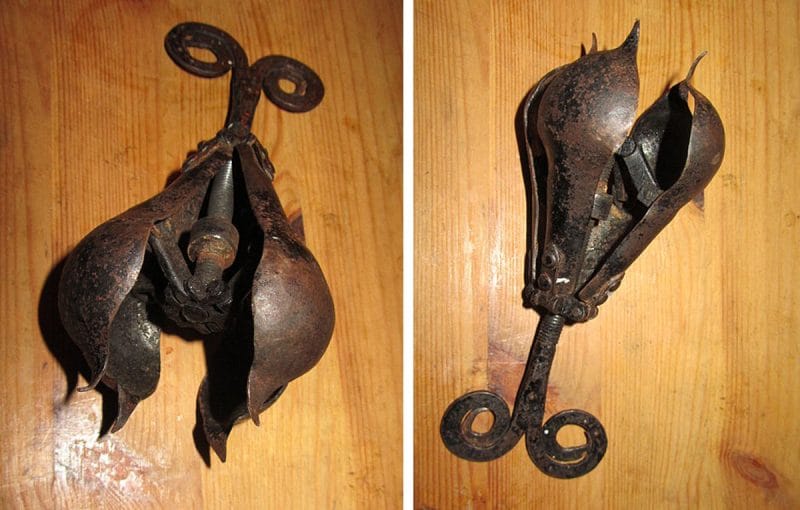
Source: AtelierMonpli/Wikimedia Commons
Instead, this torture device was meant to stretch the skin and rip it, overloading the sensitive nerve endings.
What Does the Pear of Anguish Do?
The pear of anguish torture method involved inserting the torture device into either the mouth, rectum, or other various holes of the victim. Then, the head of the pear begins to expand once the screw or key is turned.
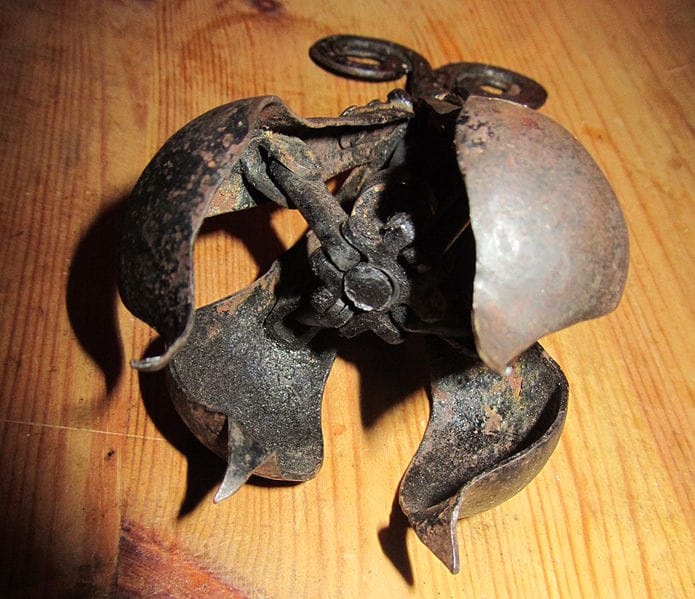
Source: AtelierMonpli/Wikimedia Commons
If the pear expanded too far, it could rip through delicate tissue. While the device sounds brutal, it was made to humiliate and torture those convicted of a crime.
Where Did the Pear Torture Device Originate?
Australian historian Chris Bishop took an example of the pear from a museum to study its construction. In his research, Bishop found that the objects started to appear around the mid-19th century. Some historical references point to the pear being used in 17th-century Paris.
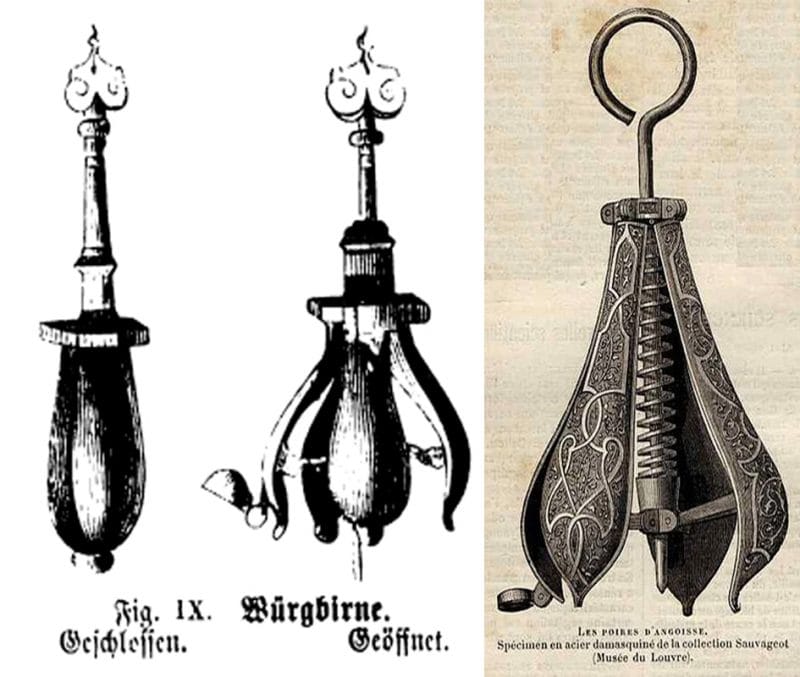
Source: Wikimedia Commons
Bishop believes that the device could never be used for a specific brand of torture that so many believe it was used for.
Was the Pear of Anguish Torture Method Real?
Some scholars believe that the key or screw of the device is not to open the mechanism but to close it. The older devices are held closed with a cap at the end, suggesting that they couldn’t be opened after inserting it into an orifice.

Source: Wikimedia Commons
The use of genuine pears of anguish remains unknown, but it could have been used to extract juices from fruit.
What Could the Pear of Anguish Be Used For?
Bishop also notes that the springs in the device are far too weak to pull soft tissue apart. The historian suggests that the device could have been used by a dentist to keep a mouth open while working on a client.
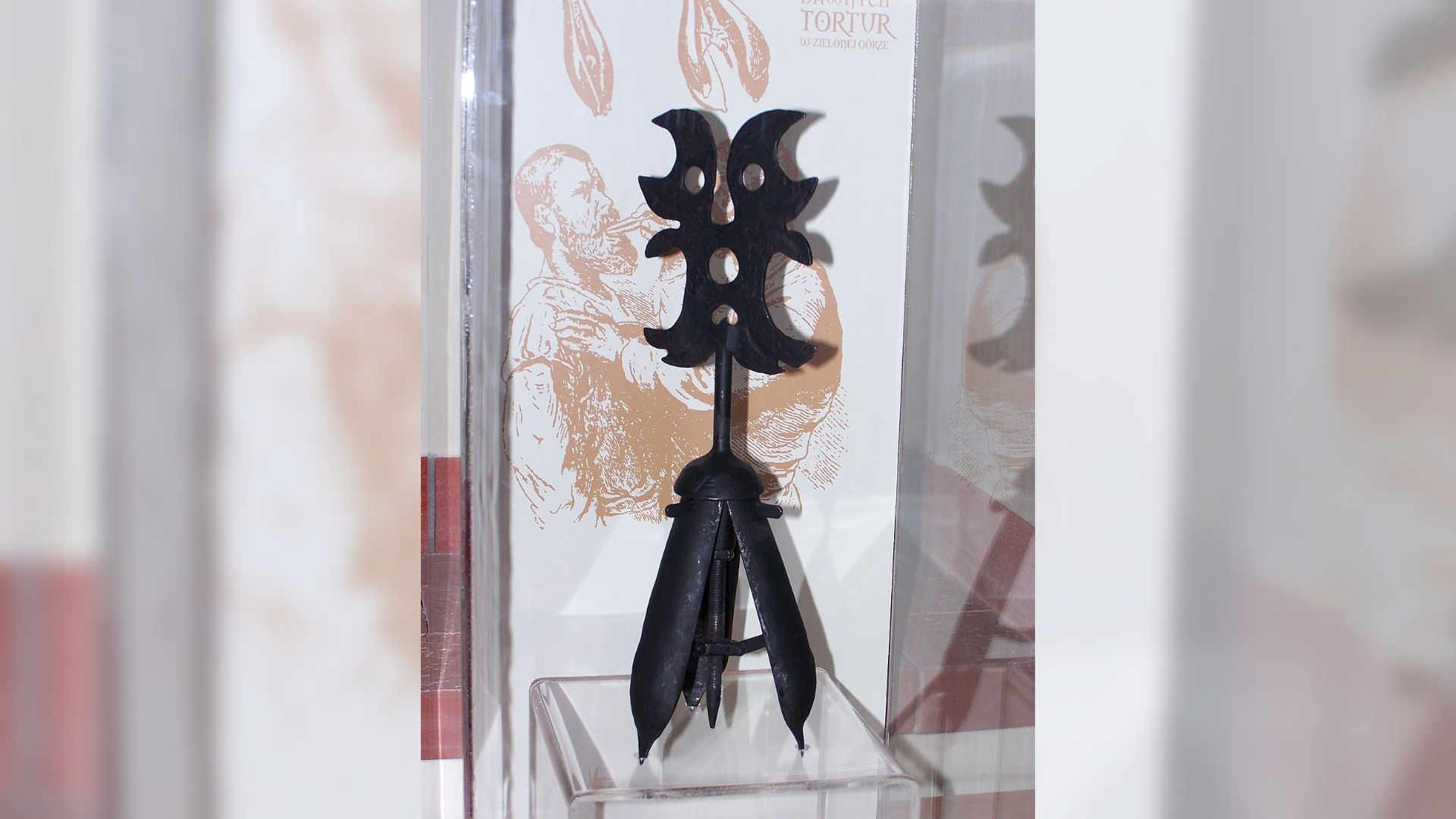
Source: Wikimedia Commons
On the other hand, Bishop suggests that the pear could have been a shoe-extender, sock-stretcher, or a glove-widener. No one seems to know how the pear of misery works.
Robbers Might Have Used the “Choke Pear”
The choke pear could have also been used by robbers. The pear of anguish criminal minds who used the device would push it into their victim’s mouth, and expand it to keep them from calling for help.
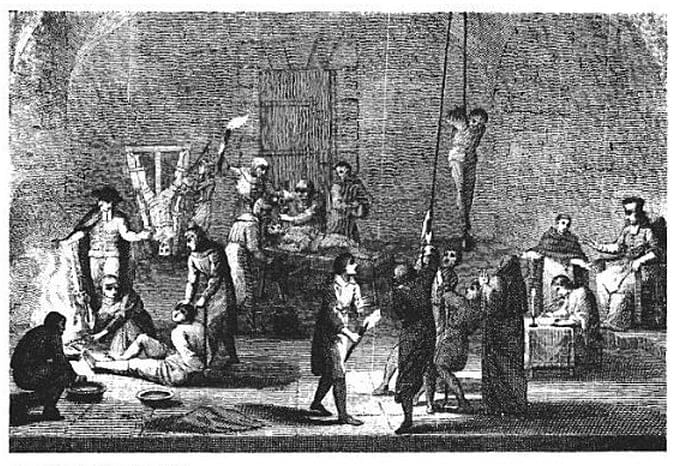
Source: Wikimedia Commons
The pear of anguish torture method is fun to think about, but does that mean the other medieval torture didn’t exist?
The Pear of Anguish in Pop Culture
While the pear of anguish might have not been used for torture, it has still captured the imagination of Hollywood. The pear of anguish “Criminal Minds” episode saw a serial killer torture his victims with “medieval” implements, which also include the pear and a “heretic’s fork.”

Source: CBS/Flickr
The pear was also featured in “Bones” and “The Borgias” (via “The ‘Pear of Anguish’: Truth, Torture, and Dark Medievalism”).
Other Torture Devices
Torture was a part of medieval society and was an acceptable practice used to extract information and force a confession from victims. However, it is unlikely that what we considered to be the most brutal devices from the era were as inventive as we wish they’d be.

Source: Wellcome Library, London/Wikimedia Commons
When we think of the most popular medieval torture devices, we should consider the simple brutality that would be easy to make and be used without breaking.
The Brazen Bull
One ancient mythical torture device supposedly used by Phalaris, a tyrant who ruled a part of Sicily in the 6th century BCE, is the brazen bull. According to The History Channel, the torture would place a victim inside and light a fire under the bull.

Source: Dimitris Kamaras/Flickr
The fire would roast the victim to death. The screams of the victim would sound like bull noises to those on the outside.
The Scavenger’s Daughter
The scavenger’s daughter, also known as Skevington’s gyves, iron shackle, stork, or Spanish A-Frame, was a torture device invented during the reign of King Henry VIII of England. The device was a metal frame that would compress the victim’s body in on itself.
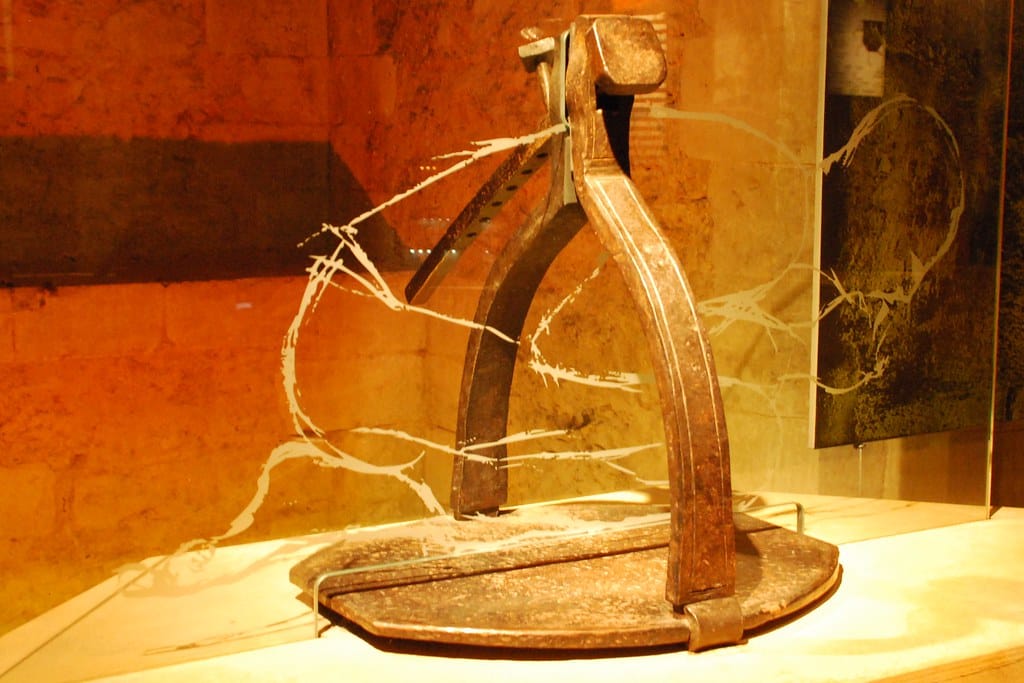
Source: Ian McKellar/Flickr
The compression from the scavenger’s daughter could be so intense that victims would start bleeding from the nose, mouth, and other parts of the body.
